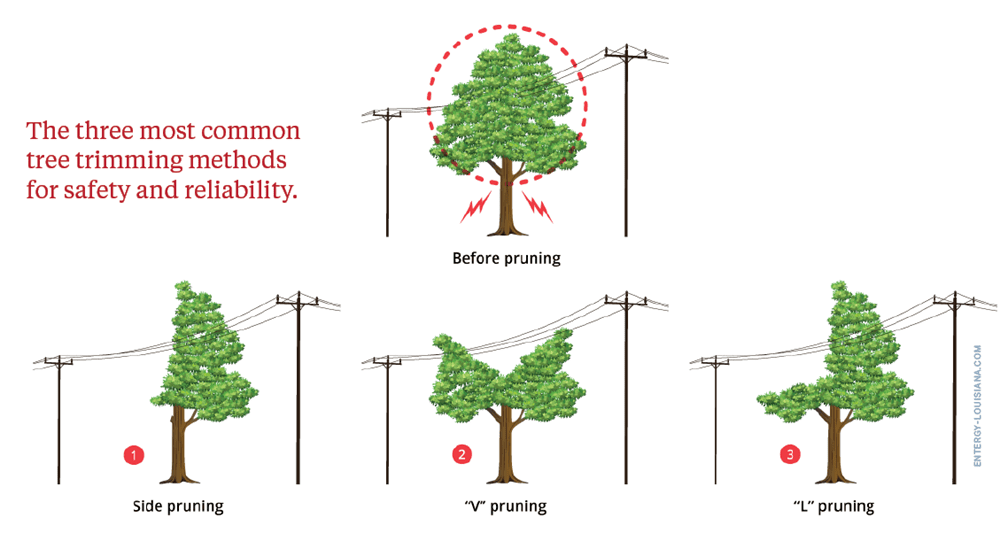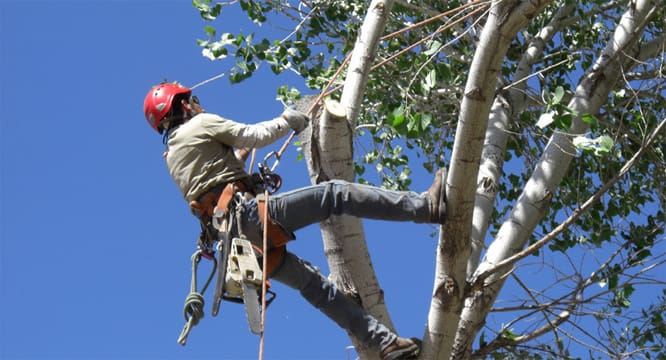Tree Trimming
Top Strategies for Effective Tree Pest Control


As an arborist, I’ve learned that effective tree pest control requires a combination of strategies.
By identifying tree pests and implementing cultural controls, we can create a healthier environment for our trees. Utilizing biological pest control methods, such as introducing natural predators, can also help keep pests at bay.
And when necessary, applying chemical treatments strategically can provide targeted relief.
By monitoring and preventing future infestations, we can ensure the long-term health and vitality of our beloved trees.
Let’s explore the top strategies for effective tree pest control.
Identifying Tree Pests
I will identify tree pests by closely examining the leaves, bark, and branches for any signs of infestation.


By observing the leaves, I can look for discoloration, spots, or abnormal growth patterns. These may indicate the presence of insects or diseases.
Additionally, inspecting the bark can reveal any cracks, lesions, or oozing sap, which could be signs of pest activity.
Examining the branches allows me to check for any dead or dying parts, as well as any unusual swellings or deformities.
It’s essential to note that different pests leave different traces, so it’s crucial to familiarize oneself with the specific signs associated with each pest.
Implementing Cultural Controls
To effectively control tree pests, one must implement cultural controls that involve employing proactive strategies. Cultural controls refer to the practices and techniques that modify the environment to discourage the growth and spread of pests. These controls aim to create an unfavorable habitat for pests, reducing their population and preventing infestations.
One effective cultural control strategy is proper sanitation. This involves removing dead and decaying plant material, as it serves as a breeding ground for pests. Additionally, pruning infected branches and trees can prevent the spread of pests and diseases.
Another cultural control method is implementing crop rotation, which involves alternating different tree species to disrupt pest life cycles.


Utilizing Biological Pest Control Methods
One effective way to control tree pests is by utilizing biological pest control methods. Biological pest control methods involve the use of living organisms to manage or eliminate pests. These organisms can be predators, parasites, or pathogens that naturally occur in the environment. They can help reduce pest populations by feeding on or infecting them, thus preventing further damage to trees.
One example of a biological control method is the use of predatory insects like ladybugs or lacewings to control aphid populations. These beneficial insects feed on aphids, effectively controlling their numbers. Another example is the use of bacteria or fungi to control diseases that affect trees.
Applying Chemical Treatments Strategically
For effective tree pest control, it’s important to strategically apply chemical treatments. Chemical treatments play a crucial role in eliminating pests that can cause serious harm to trees. These treatments are designed to target specific pests and minimize any potential damage to the environment.
When applying chemical treatments, it’s essential to consider factors such as the type of pest, the severity of the infestation, and the specific needs of the tree species. It’s also important to follow the instructions provided by the manufacturer and use the recommended dosage to ensure effectiveness while minimizing any potential negative impact.
Additionally, timing is crucial when applying chemical treatments, as certain pests may be more susceptible to treatment at specific stages of their life cycle. By strategically applying chemical treatments, tree owners can effectively control pests and protect the health and vitality of their trees.
Monitoring and Preventing Future Infestations
After strategically applying chemical treatments, I closely monitor my trees to prevent future infestations. This step is crucial in maintaining the health and longevity of my trees.
Here are some key strategies I employ for effective monitoring and prevention:


- Regular Inspections: I conduct regular inspections to identify any signs of pest infestations or potential vulnerabilities in my trees.
- Trapping and Monitoring Devices: I use specialized traps and monitoring devices to detect the presence of pests and monitor their population levels.
- Cultural Practices: I implement proper cultural practices, such as pruning, watering, and fertilizing, to promote tree health and resilience against pests.
- Integrated Pest Management (IPM): I follow an IPM approach, combining various pest control methods, including biological controls and targeted treatments, to minimize pest populations.


Hello there! I’m Logan Foster, the green-thumbed social media marketer behind the vibrant world of 1800TreeGuy.com. With roots firmly planted in arboriculture, I’ve branched out to help clients cultivate their dream outdoor spaces, one leafy canopy at a time. My knack for nurturing nature is more than a profession—it’s a way of life.
When I’m not talking trees and teaching the art of arboreal care, you can find me cheering on the Bulldogs—my alma mater’s pride and my forever team. My environmental studies there didn’t just teach me about ecosystems; they instilled a lifelong passion for protecting our planet.
Off the clock, I’m an adventurer at heart. Whether it’s trekking the Appalachian trails, pedaling down a mountain path, or crafting guides to share the wonders of the wild, I’m happiest with soil under my nails and the sun on my face. And let’s not forget Yoda, my pug sidekick. He may not have mastered the art of stillness, but his joyful grins are my daily dose of happiness.
I’m all about making connections—between people and the great outdoors and between my clients and their ideal landscape visions. My approach is personal; every tree has a story, and every garden reflects its caretaker.
If you want to green your scene or share in my outdoor escapades, give me a shout on Instagram or Facebook. Let’s cultivate a conversation and grow a community rooted in a love for the lush life.







